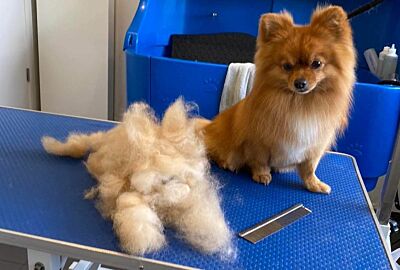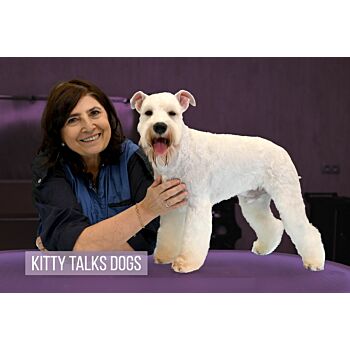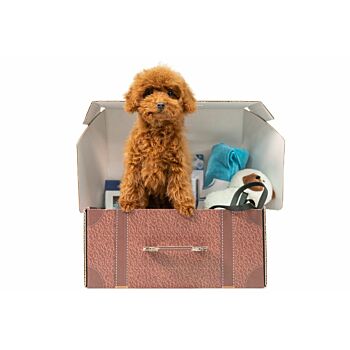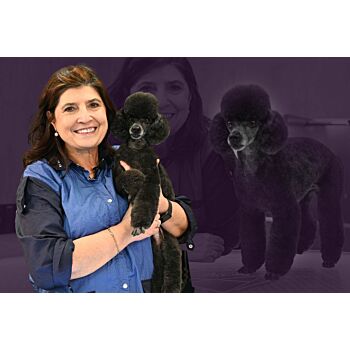The rising spring temperatures give it away: It's time to de-shed again! Dogs with a double coat are currently in the shedding period. All those hairs lying around make for a lot of cleaning. By removing the undercoat (also known as de-shedding) timely, you can keep the flying hairs to a minimum.
In addition, a dog that continues to moult can suffer from itchy skin and a scaly, dry and damaged coat. Hot spots can also occur if you do not pay enough attention to the right way of de-shedding during the moulting phase. Additional problem: tangles. If you don't de-shed the coat, loose hairs will stay in the coat. They will get wrapped around the other hairs. The result is hair knots and tangles. So, de-shedding is also important to prevent tangles and to make the coat easier to groom.
Therefore, to avoid these skin and coat problems, timely and correct de-shedding is very important. In this blog post we will look in more detail at what de-shedding is all about, which breeds need their coat de-shed and how you can do it yourself at home.
Seasonal shedding explained in detail
The hair of a dog's coat is subject to a natural cycle throughout the year. To be precise, each hair goes through 4 different phases:
- Growth phase: A new hair grows and emerges from the hair follicle.
- Transition phase: The hair stops growing and has reached its final length. This hair is still attached to the follicle.
- Resting phase: The hair dies.
- Falling out phase: The hair is loose in the follicle and falls out. At that moment, the hair cycle with its 4 phases can start again. A new hair replaces the dead hair. This new hair then enters the growth phase, and everything starts all over again!
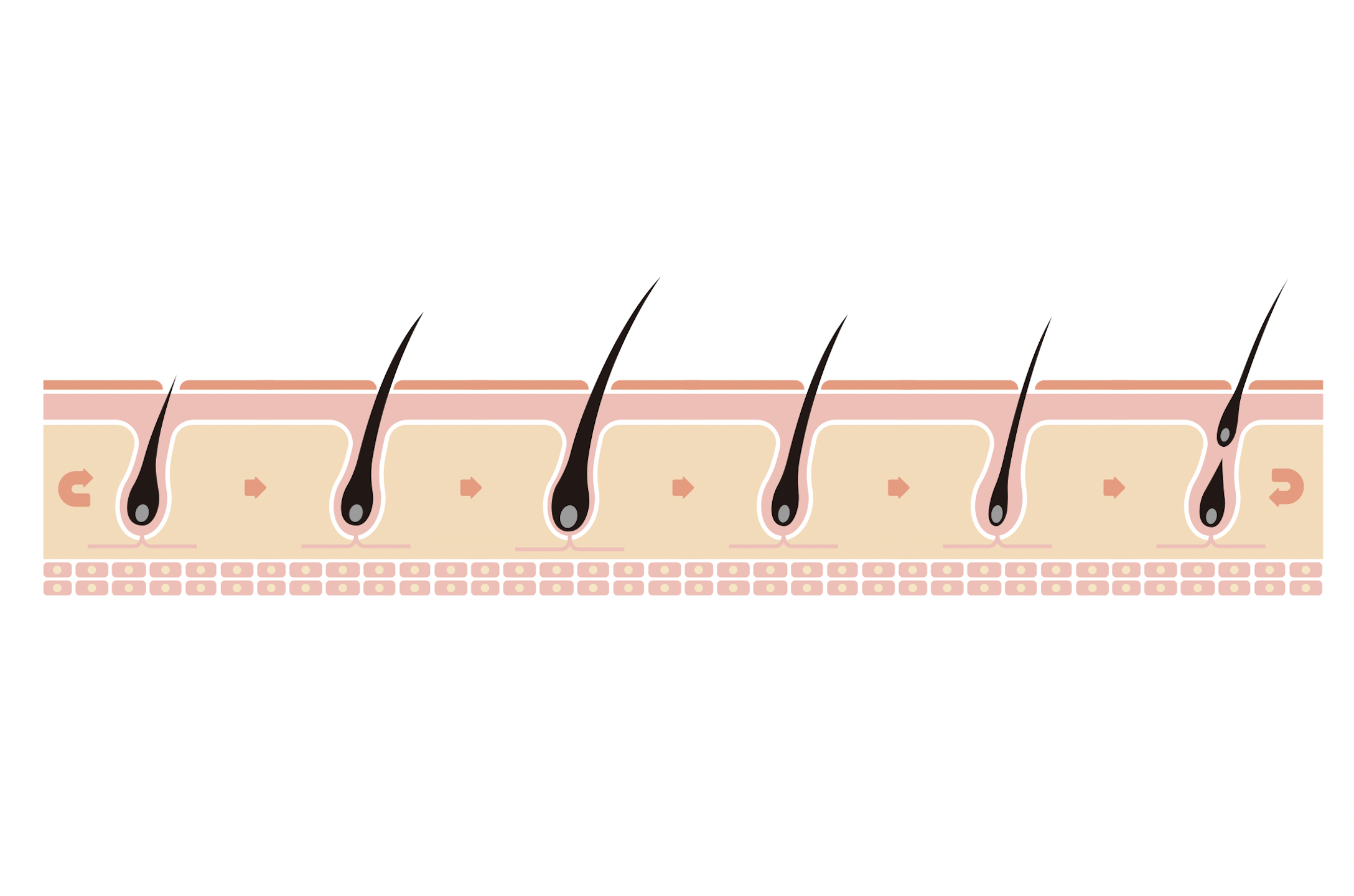
Because of this hair cycle, your dog changes his coat, as it were, and seasonal shedding (sometimes also called ‘blowing coat’) occurs. This means that the dog will lose a lot of dead hairs and especially underwool in a short period of time. The coat will then become thinner. This change of coat usually takes place in spring and autumn, but everything depends on the weather and temperatures. If it is still very cold in April, the hairs in the undercoat will stay there longer. Are the temperatures still exceptionally mild in November? Then there will be no seasonal shedding yet.
Do you see lighter-coloured fluffy wool sticking out of the coat and is the coat becoming drier and lighter? This means that the coat is shedding, and your dog will temporarily lose a lot of hair. The dead and loose hairs from the undercoat will accumulate in the coat. Normally, seasonal shedding lasts 2 to 3 weeks, but the duration can vary and is dependent on external factors such as temperature and living environment, coat condition and breed.
If the natural cycle is disturbed by external factors, the frequency and period of shedding can also change. For example, the hormone levels in spayed or neutered dogs will be out of balance, resulting in these dogs no longer having seasonal shedding but year-round shedding.
The purpose of seasonal shedding is to protect the coat from cold and heat. Extreme or unexpected temperature fluctuations can cause the coat to be in a state of disarray. Does your dog always lie near the heating in winter? Then the biorhythm and the natural cycle of the coat can get out of balance. Your dog will no longer have a coat that experiences seasonal shedding but will moult throughout the year (mosaic pattern).
The coat texture will also change when you clip the coat of a breed that has seasonal shedding. It will become duller, woollier, much thicker and curlier. We strongly advise against clipping the coat! If you clip the coat of a breed like a golden retriever instead of de-shedding it, the clipped hairs will remain in the hair follicles after clipping. New hairs then start to grow in the same hair follicles, which become overcrowded and clogged up. The result: no space for additional new hairs, an itchy skin and a coat that does not look like it should.
Breed-specific
So, the message is to de-shed! But what kinds of coats need to be de-shed? The following types of coat and breeds have shedding periods and seasonal shedding:
- Coat group 1: short-haired dogs such as a French bulldog, a Great Dane and a smooth-haired dachshund
- Coat group 2: short double-coated breeds with much or little undercoat, for example a Labrador, Malinois shepherd or Rottweiler
- Coat group 3: double-coated breeds with undercoat such as an Akita, a Siberian husky or a German shepherd
- Coat group 4: long double-coated breeds, for example a Scottish collie or a keeshond
- Coat group 5: curly hair with growing undercoat like a curly-coated retriever or a Mudi
- Coat Group 6: short to medium length silky hair, combined with long silky hair on legs, ears, belly and trousers (flags and furnishings) like an English setter or Cavalier King Charles spaniel
- Coat group 7: soft top coat and undercoat and a combined coat, for example a golden retriever, Bernese mountain dog or a Border collie
- Coat group 8: wire-haired dogs (the top coat and undercoat have seasonal shedding, the feathering on the legs has a mosaic pattern) such as a fox terrier, West Highland white terrier or schnauzer.
All the above breeds need to be de-shed.
And now, let's get to work!
After the theory, it is time for the practice. As soon as you notice that your dog is coming into his or her moulting period, it is important to anticipate as quickly as possible and remove the large packs of hair in the right way. Not sure how best to go about this? Of course, you can always have this done in a professional way at the dog grooming salon. You can do this two times a year during the moult, but also more than twice. If you choose to de-shed the coat at home as well, we recommend doing it in a place where it doesn't hurt that a large amount of hair is flying around. ?
The best material to choose also depends on the length of the hairs. The Shed Stopper allows you to easily and efficiently remove loose and dull undercoat during the shedding period of short-haired dogs without damaging the top coat. This professional tool works great and is very efficient. Some caution is advised as this tool is very sharp. The Shed Stopper is not suitable for use by children and extra caution is advised around skin folds, nipples, dewclaws, genitals, ears, the base of the hind legs, eyes and other sensitive areas. Gently comb the coat with the Shed Stopper in the direction of the hair growth using a light stroke. Do not apply too much downward pressure while combing. Outside the moulting season, the coat can be brushed weekly using a rubber brush or glove.
Does your dog have longer guard hairs (golden retriever, Newfoundland dog, Bernese mountain dog)? Then we recommend you use a (shepherd's) rake during the de-shedding process. We have a wide range of rakes. Ideal ones are the Show Tech Saint Roch 3 Row Rake, the Show Tech Antistatic Rake Comb and the Show Tech Rake Comb (Medium and Large). These rakes help to comb the loose hairs out of the coat.
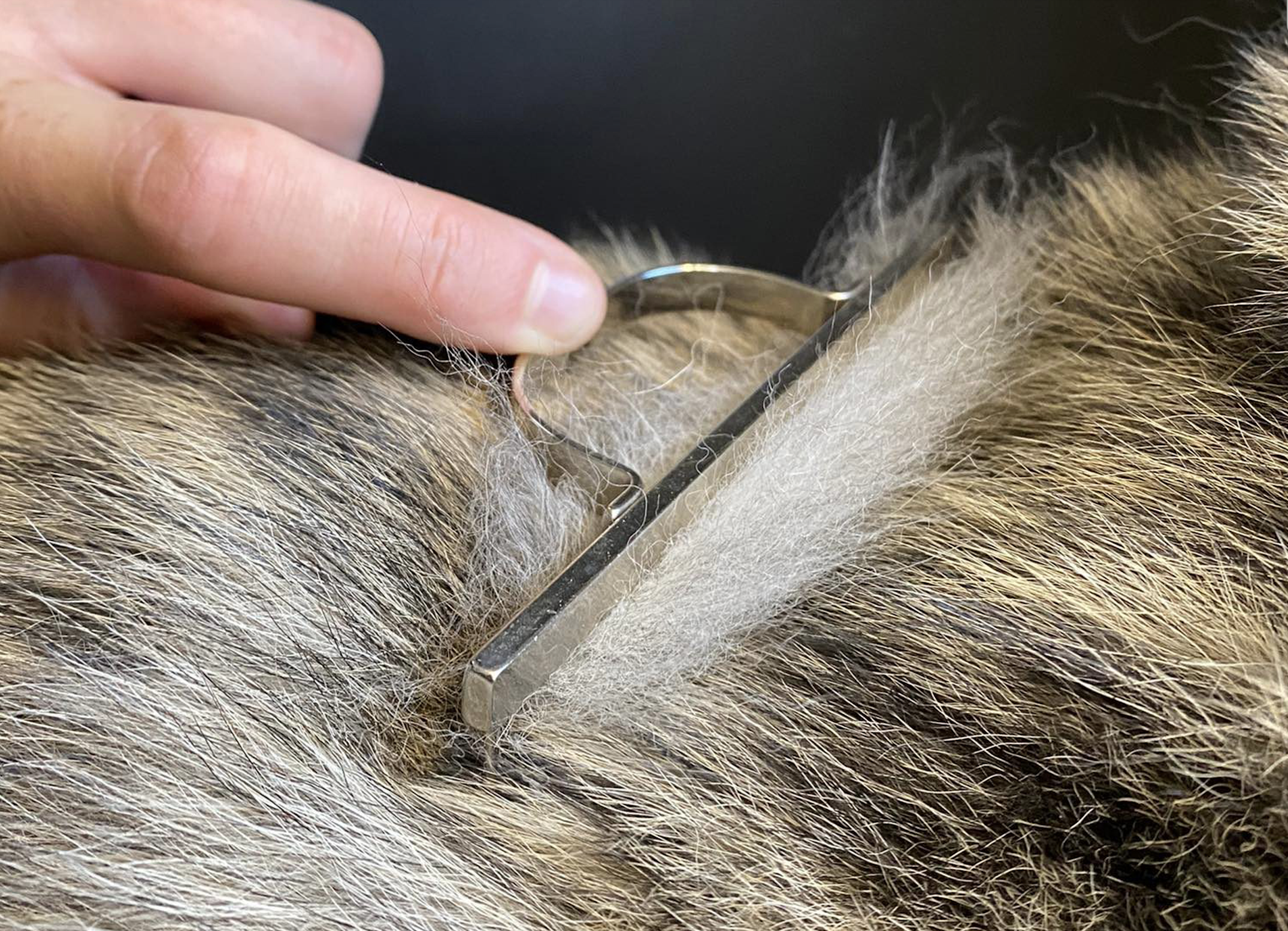
Keeping the skin tight, hook the rake under the loose coat and always comb in the direction of hair growth. Do this gently section by section, starting against the skin and working towards the hair tip. Caution: If the hair is knotted or tangled, you will need different material. Of course, you can also combine a shepherd's rake with a slicker brush and a comb.
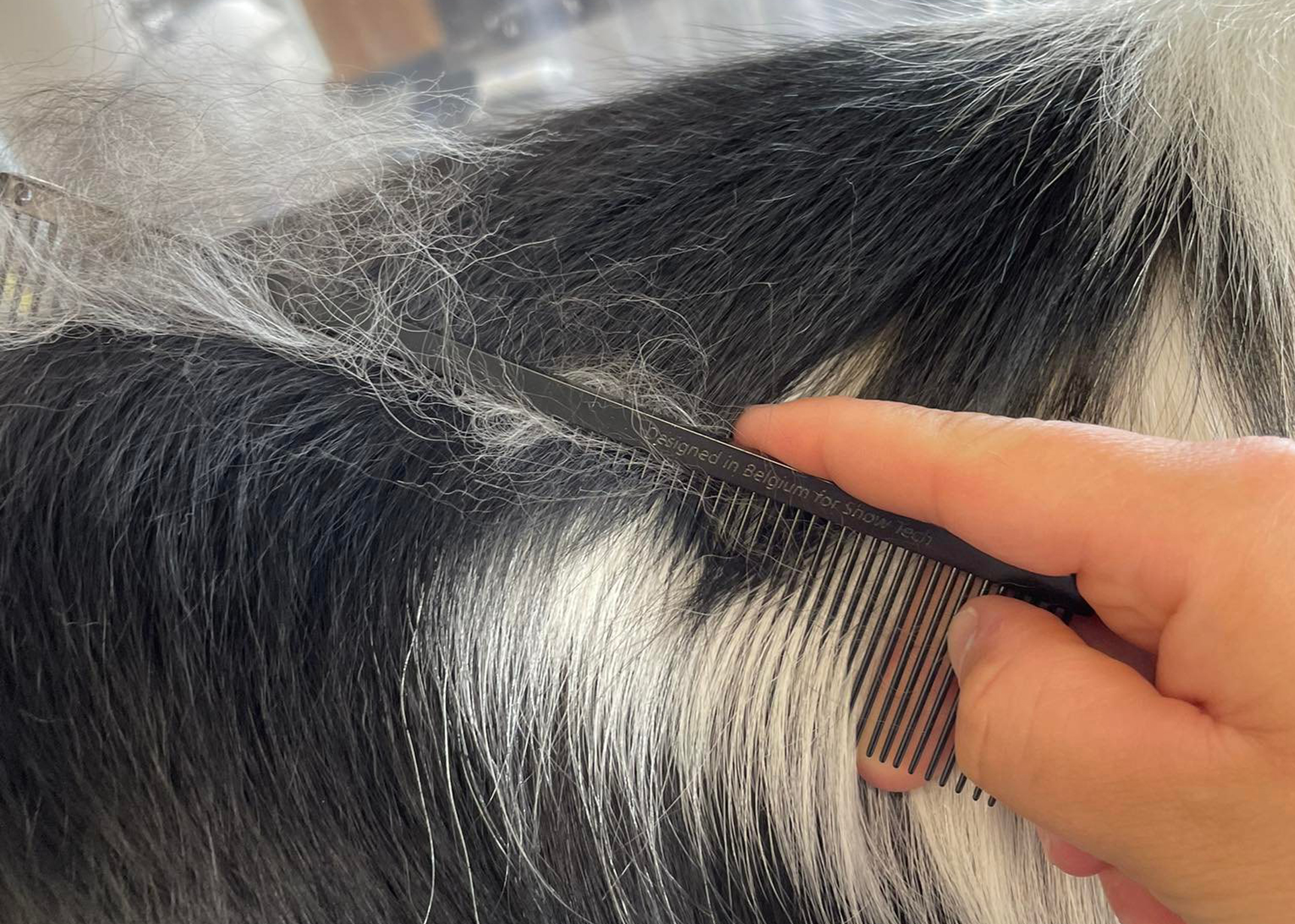
The Twist & Cling Comb is perfect for double coats! Its pins are flexible and follow the curves of your dog. By using the slicker and the Twist & Cling comb you can easily check if most of the loose hair has been combed out.
On the market, there are many other brushes, combs and the like to remove loose hair. Not all these products are equally suitable for every dog. If you choose the wrong material, it can damage the coat and break the hairs! So, make sure you care for and treat the coat correctly at home. At Transgroom, we are always ready to advise and guide you so that you make the right choice.
In conclusion
Never de-shed a dog's coat if the hairs are not loose or ready to fall out. If you brush too much outside the moulting period, you will remove healthy hairs from the hair follicle. This leaves room in the follicle for a new hair. That new hair will fall out then outside the season and ‘before its time’, because it has been removed unnaturally and does not follow the natural cycle anymore. If you brush your dog every day or several times a week outside the moulting period, you will remove the healthy hairs from the coat too soon. This will result in a dog coat that will shed excessively and eventually also constantly. You are taking the coat out of its natural cycle and creating a kind of 'over-brushing effect'. Only on breeds with long feathering is it important to keep brushing or combing the longer hairs throughout the year to prevent hair tangles.
To sum up: De-shed with the right material and only when it is the right time. Are you still unsure about the correct way to de-shed your dog’s coat after reading this blog post? Feel free to ask our professional sales team any questions you may have. If you don't feel like doing it yourself, you can of course also have your dog professionally groomed in a grooming salon. Trained dog groomers act with expertise and love to groom your dog so that his or her coat will be in excellent condition again!

